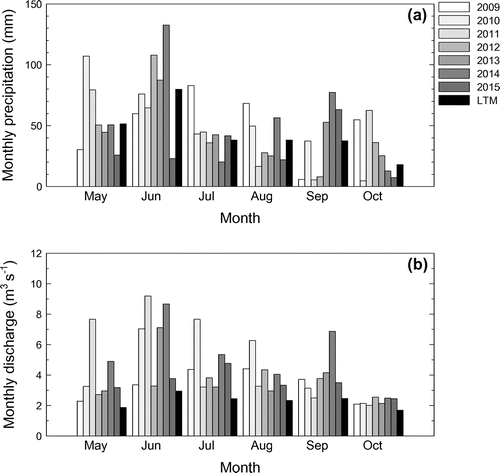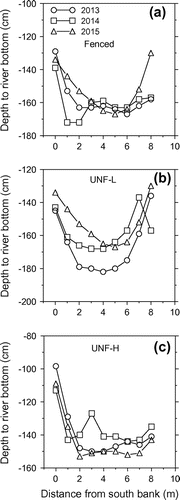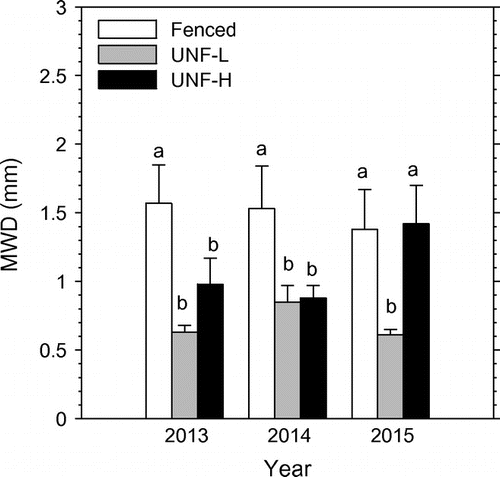Figures & data
Table 1. Hypotheses for influence of reduced or no riparian grazing impact on channel morphology properties.
Figure 1. Monthly precipitation (a) and discharge at the mouth (b) in the Lower Little Bow River for May to October of 2009 to 2015 in relation to long-term mean (LTM) precipitation (49-y, 1961–2010) and discharge (42-y, 1973–2015).

Table 2. Influence of riparian grazing management on selected river morphology properties during a 3-yr study (2013–2015). Measurements conducted on the fenced reach in 2013 and 2014 were done after 12 and 13 yr of total cattle exclusion, respectively. Measurements in 2015 were done after 11 yr of cattle exclusion followed by 2 yr of periodic grazing.
Figure 2. Mean depth to riverbed with increasing distance from south bank across years for the fenced reach, unfenced reach with low-cattle impact on riparian pasture (UNF-L), and unfenced reach with high-cattle on riparian pasture (UNF-H). The standard error bars are not shown, for clarity.

Table 3. Influence of riparian grazing treatment on streambank erosion rates for the Lower Little Bow River over 6 years (2009–2014).
Figure 3. Influence of grazing on mean-weight diameter (MWD) of riverbed sediment in 2013, 2014 and 2015. The three grazing treatments are fenced reach, unfenced reach with low-cattle impact on riparian pasture (UNF-L), and unfenced reach with high-cattle impact on riparian pasture. Vertical bars are means plus 1 standard error. Means within each year followed by different lower case letter are significantly (P ≤ 0.10) different.

